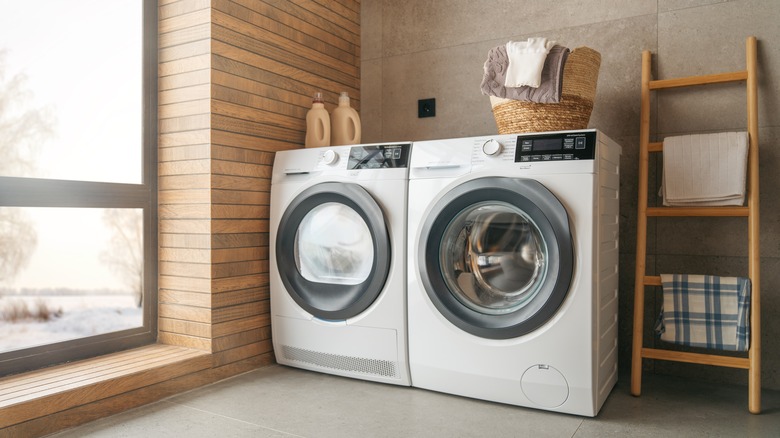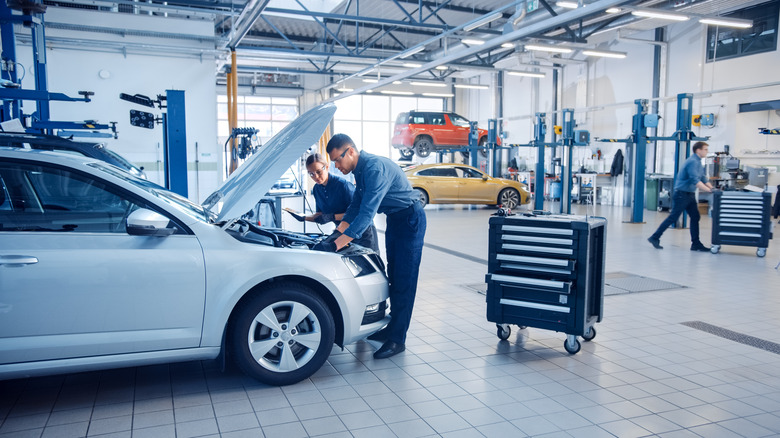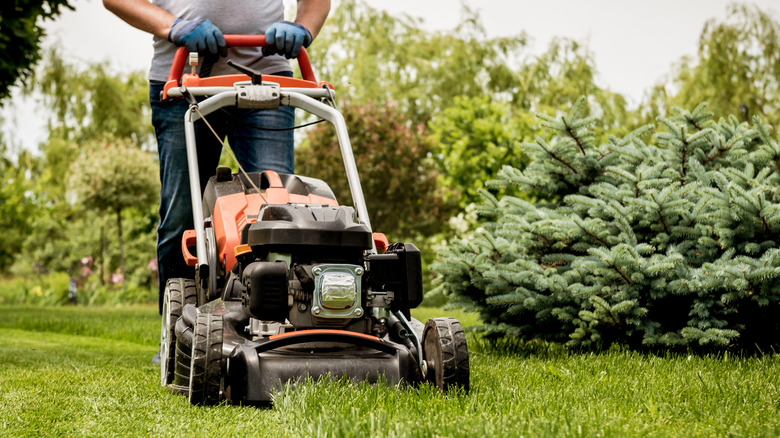Gadgets That Are More Expensive To Repair Than Buying A New One
Not long ago, we had repair shops across the country with helpful technicians at the ready to repair our broken devices. Technicians and repair shops still exist, but the scope of what they can or will repair has changed drastically. Finding a shop to repair your washer and dryer or even your refrigerator should be no problem, but when something goes awry with a toaster, the first inclination of most folks is to toss it and start shopping for another one. The influx of cheap goods from China over the last few decades has fueled this attitude toward repair in many ways, but other more nefarious reasons stand to keep new goods flowing from retailers to consumers.
Problems getting gadgets and devices repaired seep into many industries and affect consumer goods of all price ranges. Sometimes roadblocks exist to keep us from doing work on our own products while supply issues make replacement parts unobtainable. A groundswell of political activism has grown surrounding these roadblocks to repair in a growing movement called the right to repair. Independent repair shops, farmers, and computer professionals claim that manufacturers are creating a marketplace that ties us to authorized repair centers and closed supply lines in an attempt to make more money to consumers' detriment. Digging into this issue a little reveals some of these gadgets that today may be more expensive to repair than replace, furthering our descent into a disposable society.
Phones
Modern life is nigh impossible to navigate without a mobile phone. Furthermore, the days of the indestructible Nokia and small, convenient flip phones are long gone, so we are forced to deal with fragile devices that have high-tech components sandwiched between slabs of glass. Additionally, while these devices add an impressive amount of technology, so too do they add to the price. Early smartphones came with removable batteries and could fairly easily be taken apart to replace broken components. Today they are completely sealed, requiring specialized knowledge and tools to perform basic repairs.
For new phones of the upper echelon of pricing, repair costs may well be worth the expense and device insurance can help soften the blow. The real issue comes up as a phone ages just a few years, remaining fully functional but devalued to a point that repairs can cost more than buying a replacement. Furthermore, manufacturers such as Apple all but require you to use only authorized service centers as they do not make their parts available to the general public. This practice is chief among right-to-repair advocates who want consumers to have the ability to repair their own property or have independent shops available that can do it for them. We reported in 2017 that Apple was lobbying against legislation that would have forced it to open up its schematics and parts catalogs, doing so with the argument that it knew best how to protect its customers from the hazards of unauthorized repairs.
However, this can look to some like an excuse to keep more profits for itself at the expense of the consumer. The company has since relented and opened up some self-service options, though the process involved comes with its own controversy. This practice also continues to build up e-waste as phones are continually thrown out when they could have plenty of usable life left. E-waste is a toxic problem that most of us never think about, as it gets shipped to developing nations as an affordable means of disposal, only for it to end up poisoning the most vulnerable populations with mercury and other toxic heavy metals. More needs to be done to make phones more durable and easily repaired; doing so would be good for consumers who could save money and be good for the Earth by reducing pollution, as well.
Small appliances
Small appliances are a wonder of the modern world and make once time-consuming jobs incredibly simple and quick. Making toast at one time required carefully tending to it by the fire, flipping the hand-cut bread while working to ensure it toasted evenly. Today, you pop a couple of slices in the toaster and come back in a few minutes and it's ready to eat. So what can you do if your toaster no longer toasts? Most of the time, the best and possibly only course of action is to trash the device and get a new one. Most toasters and similar appliances found in an average home are pretty inexpensive to begin with, so taking the cost to pay a professional to repair them can easily cost more than the device itself. Sadly, this is true of many small appliances, including rice cookers, electric skillets, food processors, and similar.
This is not necessarily a function of manufacturers trying to gatekeep the serviceability, but the extraordinarily cheap nature of the devices. This does not necessarily apply to the kind of high-end Kitchen Aid devices found at Williams-Sonoma, but the common type from Wal-Mart that many people use. Sadly, most repairs to these kinds of devices would be fairly easy and the parts would be cheap. But since the late '90s, thousands of small electronics repair businesses closed in the U.S., and even for those that remain, parts are often unavailable from the manufacturers.
One bright spot for these devices is the relatively recent development of websites such as iFixit.com. This website in particular seeks to empower consumers to take care of problems themselves by offering manuals and schematics along with access to factory-authorized parts and professional tutorials to help users perform DIY repairs. This has the added benefit of reducing the amount of waste cluttering our planet, and it's a positive development in keeping more of the things we consume lasting longer for a more sustainable future.
Washers and dryers
The technological advancements in the design and construction of washers and dryers over the last 50 years are impressive. Machines that once relied on mechanical switches and timers are now fully digitally controlled and further enhancements in the moving parts have led to more machines that use water and power more efficiently. But is there a cost to this progress?
It is not uncommon to come across major appliances in a person's home that have been running for decades while, at the same time, another home may have relatively new appliances in need of costly repairs. The old equipment, while inefficient, relies on mechanical parts often made from robust metals while the modern appliance is full of circuit boards and parts made of plastic or nylon. The trade-off can be reliability and durability. The New York Times reported that the influx of expensive electronic parts makes repairs much more costly and can be more likely to fail. Electronic parts are sensitive to shock and moisture in a way mechanical parts are not. Additionally, parts are less universal and repair technicians are unable to stock everything that might fail, adding to the time and cost of repairs.
When a consumer spends a hefty amount on an appliance, they expect it to work well for some time. Most do. New appliances generally come with a warranty and extended service contracts are usually available to offer some peace of mind for some additional time. The problem for most is when a piece of equipment, especially a digitally-controlled front-loading model, hits the four, five, or six-year mark, according to Consumer Reports. They should have a good deal of life left, but when, for example, a circuit board fails, the repair can cost hundreds of dollars. Control units are often the most expensive part of the machine and also the most likely to fail. This puts consumers in a bind as repairs can quickly add up to an amount that is no longer reasonable to sustain.
Refrigerators
Life without a refrigerator seems unbearable to modern sensibilities. More than anything, the appliance has enabled lifestyles of health and abundance from the ability to safely store food for preparation at our convenience. Refrigerators are also impressive for their ability to run all day every day without ceasing for years or even decades. And today, manufacturers are reimagining what a refrigerator can be in the home. The newest models may have a multi-temperature holding capacity and increasingly integrate internet-connected touchscreens to offer convenient ways to keep tabs on schedules, recipes, or grocery budgets. Furthermore, manufacturers are coming up with new refrigerants deemed to be safe — or, at least, safer — for the environment.
Progress often has its costs, though. As with the previously mentioned appliances, smart refrigerators rely on circuit boards and electronic controllers to a high degree. These are the expensive parts that can and do fail, resulting in high repair bills. However, for the newest and flashiest of models, another issue can arise. For example, First Coast News, a Florida NBC affiliate, reported in 2018 about the troubles one family was reportedly having with their smart fridge, a Samsung Family Hub model.
Choosing the Samsung refrigerator meant an outlay of $4,300 for the smart appliance, complete with a touchscreen and Bixby. While the family said they experienced no problems with any of the extra features of the fridge, it allegedly failed in its most basic function: keeping food cold. Because of a new refrigerant and cooling system used, technicians reportedly hadn't completed the specialized training nor did they have the proper supplies to complete the repair. The owners claimed they had gone at least a month without a refrigerator. Surely the problem is resolved by now, but this is one of the scenarios that may play out with these ultra-high-end appliances today.
Farm equipment
Farmers require a huge amount of equally huge equipment to ensure our kitchens are stocked with fresh food every day. Most people rarely consider what it takes nor do they know the extreme expense invested in these machines. Hundreds of thousands of dollars go into farm equipment, with John Deere being among the largest manufacturers. John Deere and others have also invested significantly in modernizing their equipment and most of it is as technologically advanced as our cars, if not more. Computers, touchscreens, GPS locators, and more are commonplace among modern tractors, harvesters, and combines. Manufacturers have made lives easier for farmers in some ways while simultaneously making them more difficult in others.
When farmers buy equipment from John Deere, for example, they own the equipment but not the software that operates it. For that, they are granted a limited license only, according to the Electronic Frontier Foundation. In the old days, if a farmer wanted to modify the diesel engine on a tractor, they were welcome to do whatever they wanted with no problem. But today, with software controlling nearly every function of that engine, only the manufacturer has the right to modify it at will. This forces farmers to rely on authorized dealers only to perform repairs and this practice has led to a backlash among farmers everywhere.
Bloomberg reports on how well-integrated software is in modern equipment to the point that not only does the computer keep everything in working order, it relays everything via the cloud to John Deere. If a farmer decides to repair something on their own, messages can be relayed back to Deere and a signal returned to render the machine inoperable until an authorized service provider intervenes. For farmers living in rural areas, this can mean transportation costs of thousands of dollars and long wait times at the dealership, costing them money every day the equipment is out of service. This issue is complex and merits in-depth discussion; it is a great example of a modern-day David and Goliath. Fortunately, bipartisan legislators at state and local levels are beginning to address the issue and legislation to safeguard our farmers is in the works, slowly making the rounds. Hopefully, our farmers can soon get back to focusing on what they do best: keeping us well fed.
Automobiles
For people living in American cities that require car ownership to survive, the repair shop can be the bane of their existence. Modern cars are great, though; they last longer, are more efficient, more comfortable, and run more reliably than ever. That said, repairs can be exorbitant. Engines rely on dozens of systems not present in cars just 40 years ago, and while engineering and manufacturing quality is up across the board, cars have more parts than ever and that provides more opportunities for components to break.
The right-to-repair movement also applies to the auto industry. Most manufacturers use dealer-specific software and tools to diagnose and repair cars, preventing even educated and experienced car owners from doing their own work. Wired reported in February 2022 that, in response to a voter-approved law that requires automakers to expand access to data in their cars, Subaru and Kia disabled telematics systems that allowed owners to use such features as remote start or automated messages in an app. The ballot measure was intended to give owners more opportunities to take care of issues without relying on the dealer, so manufacturers responded by shutting them out. Manufacturers insist that their concern is over safety and liability issues should they make information more open while opponents assert that it is all about raising more revenue, according to Autoblog.
Being prevented from doing some repairs can end up being expensive, but the problem for owners of older cars is when repairs exceed the value of the car altogether. This problem affects millions of people every day. Sometimes a single repair, such as an engine or transmission replacement, can easily outpace the retail value, especially on cars that are around 10 years old or more. Forbes Wheels notes that another issue is when a single costly repair may be nowhere near the total value of the car, but repairs needed as the car ages can add up quickly. The report's example is that a car worth about $4,000 probably should not get a $2,500 transmission, as that may just be the beginning of a litany of repairs coming down the road. That is when you must decide how much you are willing to invest in keeping your car or if you should throw in the towel and trade it in for a newer model.
Lawn care equipment
Anyone fortunate enough to live in a dwelling with its own yard knows that certain responsibilities come with it; chief among them is lawn care. Not only is such maintenance needed to keep your home looking nice, but most cities also have ordinances requiring it. Having an unkempt lawn can attract side-eye from neighbors and a fine from your city. If you don't have the luxury of paying for a service for its upkeep, lawn equipment will be a necessary evil. However, outdoor power equipment can be costly to own and maintain.
Most gas-powered lawnmowers and trimmers are fairly reliable these days, but nothing is perfect — and as with so many products, you generally get what you pay for. This can make trimmers and mowers too expensive to repair. Husqvarna, a manufacturer of high-end lawn equipment, advises that cheap lawn mowers can be more expensive in the long run. The company may be biased, of course, but it still makes some good points. The quality of cheap equipment goes up considerably with the price. Low-end machines may skimp on parts such as good bearings or quality steel, meaning a breakdown is more likely to happen. Furthermore, the lack of bearings on the wheels, for example, can make the actual physical work required more difficult, leading to more time spent doing the job.
Time is money, after all. When a breakdown does occur, the cost can exceed the price. A $140 mower that needs $80 repairs a couple of times quickly becomes a bad investment, while a $400 mower that rarely sees the shop can save money over time. The same ideas apply to trimmers and edgers, especially since some of them start at a price equal to a minimum labor charge, according to Lawnstarter. With small equipment, the complex issues of right-to-repair are less applicable. These devices adhere to an older axiom of you getting what you pay for. Paying extra now can save you later.







